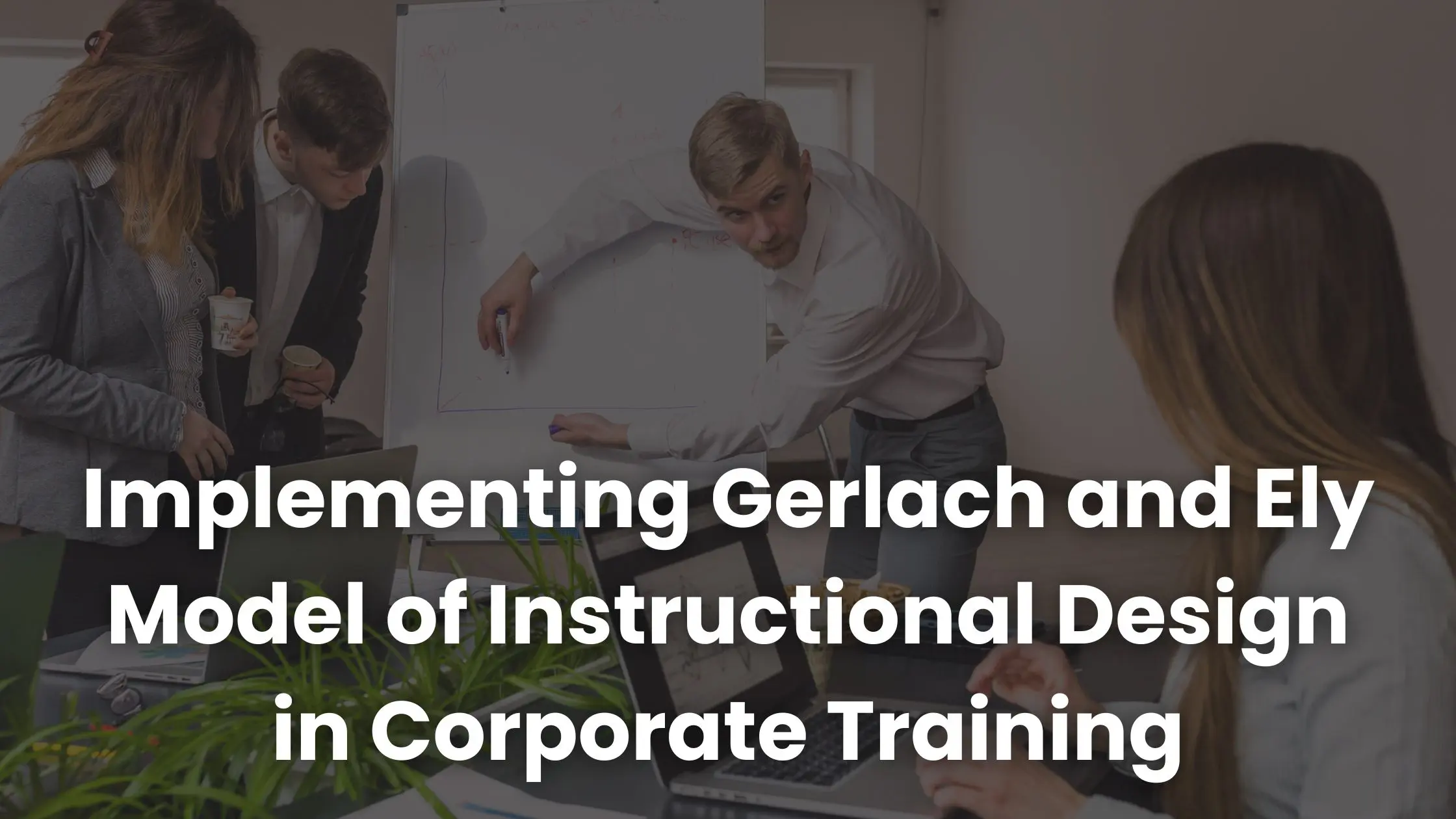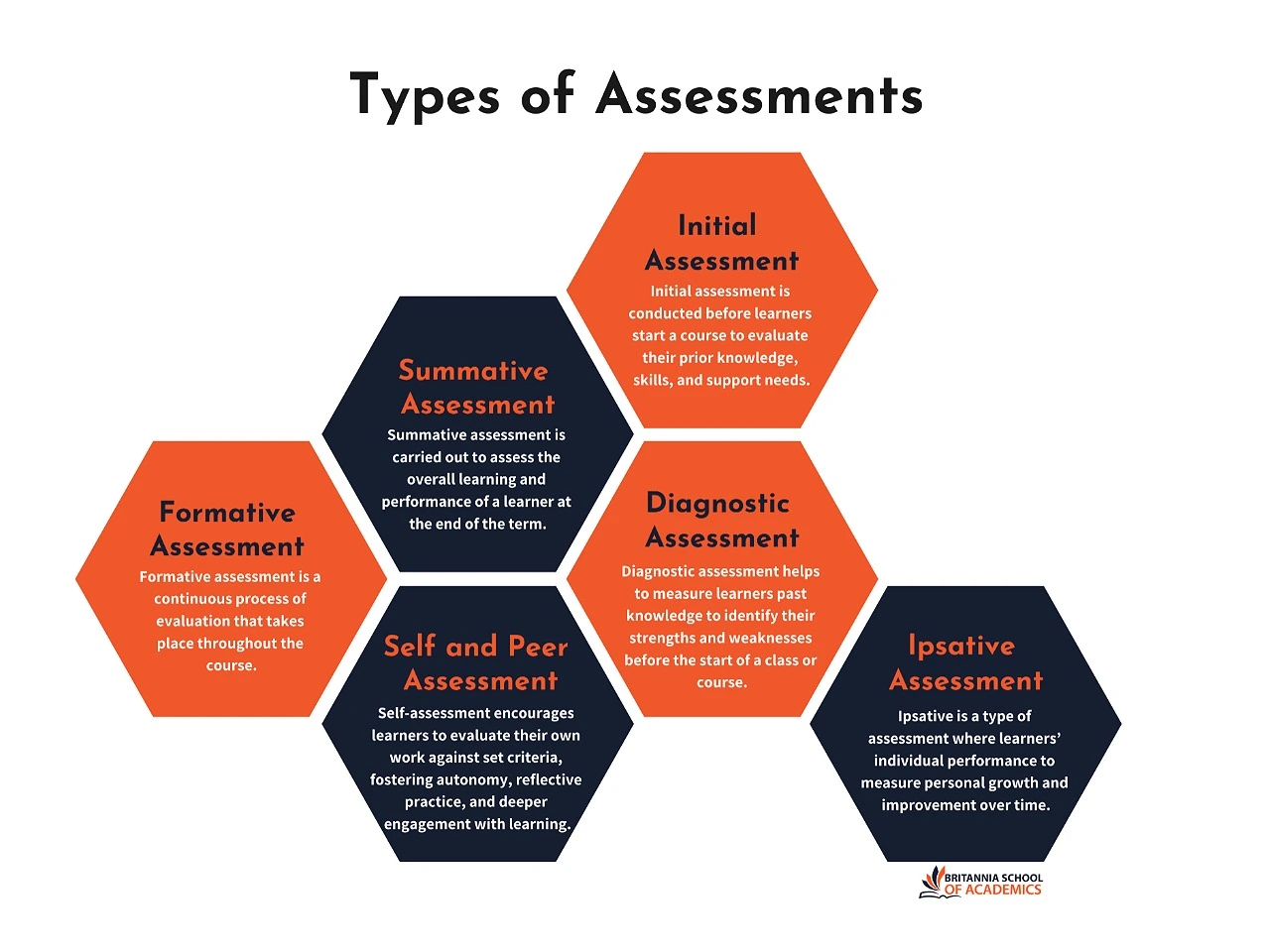Implementing Gerlach and Ely Model of Instructional Design in Corporate Training
Looking to make your corporate training more effective and productive? Here is how the classic Gerlach and Ely Model of instructional design can assist you.
Looking to make your corporate training more effective and productive? Here is how the classic Gerlach and Ely Model of instructional design can assist you.

As a training provider or educator, designing impactful corporate training can sometimes feel overwhelming. Choosing the right instructional design model ensures your training not only meets business goals but also upskills your learners.
The Gerlach and Ely Model is a practical instructional design approach that offers a clear, systematic way to design effective training. It integrates content, objectives, learner characteristics, media, and environment cohesively. This makes the learning model relevant to today’s corporate settings, despite being developed decades ago.
In this post, we will learn about the classic Gerlach and Ely Model and how you can implement it step-by-step in corporate training. Let’s dive in.
The Gerlach and Ely Model was developed by Vernon Gerlach and Donald Ely in the 1960s as a general system approach to instructional design. Unlike linear models, it emphasizes a cyclical and interrelated process that blends instructional planning and media utilization.
According to the Gerlach and Ely model, instructional design is not just about what is taught, but how content aligns with learner needs, media formats, and the learning environment. This interconnectedness makes it agile for various contexts, notably corporate training, where multiple variables must synchronize for effective knowledge transfer and skill development.

The Gerlach and Ely Model identifies 10 critical components of effective teaching, each of which plays a crucial role in developing enhanced learning experiences. These include:
It involves selecting and defining the subject matter to be taught. The content should be relevant, organized, and structured logically to facilitate learner understanding.
Here, clear and measurable learning objectives are formulated based on the content specification. Objectives define what learners should be able to do and under what conditions, providing direction for instructional activities and assessments.
This element focuses on identifying learners’ existing knowledge, skills, and attitudes before instruction begins. Assessing entering behavior helps tailor instruction to learner readiness, avoiding redundancy and enabling targeted learning paths.
Instructional strategies are planned to guide how content will be delivered and how learners will engage with the material. Designers choose teaching methods, interaction types, sequencing, and pacing based on learner needs and objectives.
This involves structuring learners into appropriate groupings for instruction, such as individuals, pairs, or teams, depending on the learning tasks and goals. Group organization affects collaboration potential, learner interaction, and instructional dynamics.
Time allocation determines how much instructional time will be devoted to content delivery and learning activities. Designers plan session lengths, breaks, and overall course duration to optimize attention, retention, and practical constraints.
Space allocation refers to the physical or virtual learning environment used for instruction. This may include classrooms, labs, training centers, or online platforms.
Instructional resources encompass all materials and media used to support learning, such as textbooks, videos, software, or simulations. Selecting appropriate resources enhances understanding and caters to diverse learning styles.
This element focuses on assessing learners’ achievements relative to objectives through tests, practical exercises, observations, or projects. Performance evaluation provides data on learning effectiveness and helps identify areas needing reinforcement.
Analysis of feedback involves reviewing results from evaluations, learner input, and instructor observations to improve instruction. This formative step fosters continuous refinement of content, methods, and resources.
When implementing the Gerlach and Ely Model, you’ll want to approach each step strategically. Here’s a detailed step-by-step guide to help you implement this model successfully in corporate training:
Begin by collaborating closely with stakeholders to identify critical business needs and any skills or knowledge gaps within your workforce. Define your training content to address these priorities directly.
Then, craft clear, specific, and measurable learning objectives that state what learners should be able to do after training. For example, "Complete client data entry accurately using the new system" or "Apply conflict resolution techniques in customer interactions."
This step will ensure your training efforts deliver real impact.
Next, assess your learners’ current skills, knowledge, and attitudes before designing any content. Use surveys, quizzes, or interviews to gather information on their entering behavior.
This insight is crucial for customizing your training so it neither wastes time on what learners already know nor leaves gaps in essential areas. Tailored training boosts engagement and effectiveness.
Consider your audience and objectives when selecting instructional methods. Mix presentations, interactive discussions, role-plays, case studies, or hands-on tasks to cater to different learning styles and keep participants engaged.
For instance, technical training may benefit from live demos and simulations, while leadership programs might include group problem-solving and reflection exercises.
Remember, variety and interaction are key to deeper learning.

Determine the best way to group learners based on training goals and logistics. While smaller teams promote collaboration and peer learning, larger groups require breakout sessions to maintain engagement.
Also, plan your timing and spaces for your sessions to fit learners’ schedules. Whether you opt for a live, virtual, or blended approach, make sure it maximizes attendance.
Thoughtful organization helps create a learning environment where learners feel connected and invested.
One of Gerlach and Ely’s core strengths is integrating instructional media effectively.
Choose resources that complement your content and strategies. Videos can demonstrate processes clearly, eLearning modules offer flexible self-paced learning, simulations provide safe practice environments, and printed or digital manuals support ongoing reference.
Whatever media you choose, ensure they are accessible, user-friendly, and provide multiple ways to engage with the material.

Embed evaluations throughout the training to monitor learner progress and reinforce learning.
Use quizzes, practical exercises, peer reviews, or simulations aligned with your objectives. Assessments should be realistic and directly tied to job tasks to make learning transferable and motivating.
Regular checks also help you identify who needs extra support so that you can intervene promptly.
After training events, gather feedback from learners and instructors about what worked well and what didn’t. Combine this with performance data from assessments and follow-up observations on job performance. Then, use these insights to continually revise and improve your training content, delivery methods, and assessments.
A culture of ongoing improvement is essential to keep your corporate training relevant and impactful.
Modern platforms like Coursebox can help bring your Gerlach and Ely instructional design to life. These tools come with AI-powered features for course structuring, multimedia integration, real-time learner support, and robust analytics to manage the complexities of corporate training efficiently.
With Coursebox’s AI course creator, you can frame your content and objectives clearly. Moreover, you can assess your learners’ readiness through automated quizzes and tailor the course based on their needs. Not only that, but its multimedia capabilities let you integrate videos, interactive flashcards, and SCORM content seamlessly.

Ready to transform your training approach? Sign up for free now and explore how Gerlach and Ely Model and Coursebox together can elevate your learning initiatives today.
The Gerlach and Ely Model is a systematic instructional design framework that focuses on integrating learning content, objectives, learner characteristics, instructional strategies, and media in a connected, cyclical process. It breaks down the design process into ten key elements to guide planning, implementation, and evaluation of instruction. This model helps create well-structured and effective learning experiences by emphasizing the interrelationship between different instructional components.
Assessing entering behavior means understanding learners’ prior knowledge, skills, and attitudes before instruction begins. This information enables instructional designers to tailor training, eliminate redundant content, and meet learners at their level. It ensures learning is relevant and appropriately challenging, increasing engagement and effectiveness.
Feedback analysis involves collecting and reviewing data from learner assessments and input to evaluate the success of instruction and identify areas for improvement. It enables a continuous cycle of refinement, ensuring that the training evolves to better meet learner needs and enhances future sessions. This emphasis on ongoing evaluation distinguishes the model as flexible and responsive.
Instructional resources can include textbooks, videos, simulations, software, and other media that support learning goals. The model encourages selecting resources that complement the content and instructional strategy effectively, catering to multiple learning styles. Thoughtful media integration helps increase learner engagement and understanding.
Coursebox’s AI-powered platform supports every stage of the Gerlach and Ely Model. It helps specify content and objectives, design assessments for entering behavior, and evaluate learner progress. The tool also enables integration of diverse multimedia resources like videos and interactive activities, while its real-time AI chatbot offers personalized learner support.
